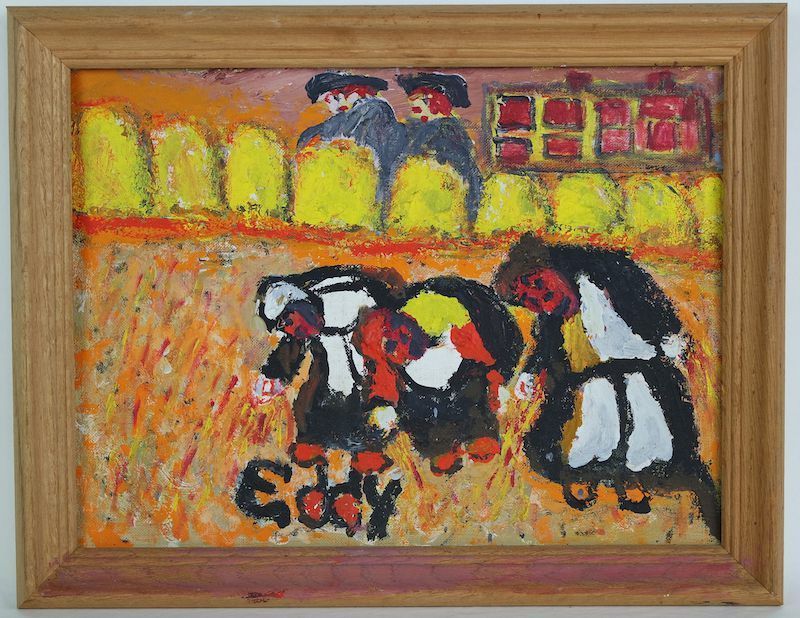Name/Title
untited (After Millet's "Gleaners")Entry/Object ID
2018.4.12Description
An example of Mumma's art history inspired paintings, this work is a variation of Jean-Francois Millet's "Gleaners", painted in 1857. This is the second work that Mr. Eddy did retelling Millet's iconic painting, with this second version bearing more detail than the first. Millet's recognizable three figures pick up grains that have been left following a recent harvest, as two figures watch in the background shielded by a wall of bright yellow haystacks. The women's facial features are created in dark black against red faces, the figure in the center seeming to acknowledge the viewer straight-on. Millet's original painting drew much controversy due to its frank depiction of labor on a largely idealized scale. Mumma grants us access to the faces of the figures, which Millet's work does not do. Millet's original also does not emphasize the background figures as much as Mumma does, although he does include fewer of them. By brightening the color palette, enlarging the figures, and creating previously nonexistent details, Mumma manages to make his work both uniquely playful and reminiscent of its culturally significant predecessor.Artwork Details
Medium
Canvas Board, Acrylic PaintCollection
Southern Vernacular Art CollectionAcquisition
Accession
2018.4Source or Donor
Mr. Josh FeldsteinAcquisition Method
DonationCredit Line
Josh FeldsteinMade/Created
Artist Information
Artist
Mumma, EddyRole
ArtistDate made
1966 - 1986Dimensions
Height
15-1/2 inWidth
11-11/16 inInterpretative Labels
Label
Edward "Mr. Eddy" Mumma (1908-1986)
Edward Mumma was born in Milton, Ohio, and after his wife's death in 1966 retired to Gainesville, Florida. Most of Edward Mumma's work consists of abstract versions of portraits focusing on faces and hands. His portraits almost always depict the same close-up, expressionless round face, with variations of colors, hand placements, and dress. Often, Mumma painted on both sides of his canvas or board paintings, and crudely framed them with scrap wood or plastic.Created By
admin@catalogit.appCreate Date
March 13, 2018
